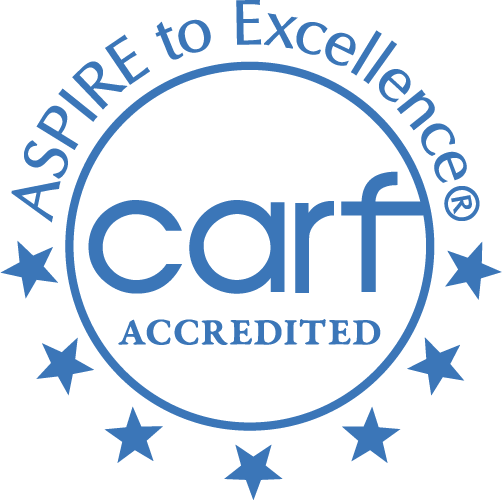Skip To Rehab Listing
That is the reason the Hancock area has 26 drug and alcohol treatment programs available to local residents who struggle with drug and/or alcohol addiction. These programs aid the region's population of 6,185 regardless of age or circumstances in order to make effective treatment accessible to anyone who is looking for it.
Drug and Alcohol Treatment Program Settings and Approaches
Hancock area residents who face alcohol and drug abuse issues can select from a variety of treatment settings based upon factors such as their location and specialized needs.
Recovery settings may consist of the following: short term rehab programs, long term drug and alcohol rehab programs, outpatient substance abuse treatment services, detox programs, inpatient drug rehab facilities.
Patients can also choose from several treatment modalities meant to deliver successful services for their needs: anger management, contingency management/motivational incentive, vocational rehabilitation services, behavior modification, substance abuse counseling approach, dialectical behavior therapy.
Special Programs for Addiction Treatment
Addiction is not one-size-fits-all, so treatment should also be individualized. That is why drug and alcohol rehabilitation programs in the Hancock area offer various specialized services intended to provide a tailored method to recovery for clients. These special programs can include the following: aftercare/continuing care, seniors or older adults, persons who have experienced sexual abuse, self-help groups, active duty military, domestic violence.
Recovery Payment Alternatives
Clients often avoid treatment because of concerns about money. However, addiction treatment programs make a variety of financing options available to patients in order to address their economic needs and improve opportunities for recovery. Some of these options are included here: cash or self-payment, private medical insurance, military insurance, payment assistance, access to recovery (atr) voucher, state corrections or juvenile justice funds.
Alcohol and drug addiction treatment is accessible for Hancock, MI. residents through many different programs, approaches, and payment options that put lasting recovery within reach.
Commonly Asked Questions about Addiction and Treatment
What does drug withdrawal feel like?
Drug withdrawal is a complex process that can feel different for everyone, depending largely on the type of substance involved, the duration and intensity of use, and individual factors like overall health and genetic predisposition. However, some general experiences and symptoms are often associated with the withdrawal process:
Physical Symptoms: Many people experience physical discomfort or illness during withdrawal. Depending on the substance, this can range from flu-like symptoms (such as fever, chills, sweating, muscle aches, and fatigue) to more severe symptoms like seizures or hallucinations. Opioid withdrawal, for example, is often compared to a severe flu, while alcohol withdrawal can be life-threatening in severe cases.
Psychological Symptoms: Withdrawal can also involve psychological symptoms like anxiety, depression, mood swings, irritability, difficulty concentrating, and cravings for the substance. These can be just as challenging, if not more so, than the physical symptoms.
Sleep Disturbances: Insomnia is a common symptom of withdrawal from many substances, while vivid or disturbing dreams may occur when withdrawing from others.
Discomfort and Distress: Generally, withdrawal can be a very uncomfortable and distressing process. The body has become used to the presence of the substance, and it can react strongly when the substance is no longer available.
Cravings: One of the most challenging aspects of withdrawal for many people is the intense cravings for the substance. These cravings can be both physical and psychological, and they can be triggered by various factors, including stress, people, places, or things associated with substance use.
Why do people abuse addictive substances?
People may abuse addictive substances for a variety of reasons, often involving a complex interplay of biological, psychological, and social factors. Here are some common reasons:
Biological Factors: Certain individuals may be genetically predisposed to addiction. This could involve inherited traits that affect the way substances interact with their brain or influence their susceptibility to mental health disorders, which can increase the risk of substance abuse.
Psychological Factors: Many people turn to addictive substances as a way to cope with mental health issues such as depression, anxiety, or post-traumatic stress disorder. Substance use may provide temporary relief from these conditions, though in the long term it often exacerbates them.
Social Factors: Peer pressure, especially among young people, can lead to substance abuse. If an individual is in an environment where drug or alcohol use is common, they may feel compelled to partake in order to fit in.
Environmental Factors: Stressful or traumatic environments can increase the risk of substance abuse. This can include living in poverty, experiencing abuse or neglect, or being exposed to violence.
Curiosity and Experimentation: Particularly among adolescents and young adults, the desire to try new experiences can lead to substance use.
Self-Medication: Some people use substances to self-medicate physical pain. For example, the opioid crisis has been fueled in part by individuals who initially used prescription opioids to manage pain and then developed an addiction.
Escapism: People may use substances to escape their reality, numb emotional pain, or simply to feel good. Addictive substances often provide a temporary sense of euphoria or relaxation, which can be enticing.
Co-occurring Disorders: Individuals with co-occurring mental health disorders are at a significantly higher risk of substance use disorders. This is because these individuals might use substances as a form of self-medication.
What are the signs of meth addiction?
Physical appearance: Meth use can lead to drastic changes in physical appearance, such as rapid weight loss, poor dental hygiene (often called "meth mouth"), skin sores from excessive picking, and premature aging.
Sleep disturbances: Meth is a potent stimulant, causing users to experience insomnia or erratic sleep patterns. They may stay awake for extended periods, followed by crashing for long hours to recover.
Increased energy and hyperactivity: Meth use can cause a surge in energy, leading to hyperactivity, rapid speech, and fidgeting. The person may engage in repetitive or obsessive behaviors, such as cleaning or disassembling objects.
Paranoia and hallucinations: Meth can induce feelings of paranoia, suspicion, and even auditory or visual hallucinations. The person may become increasingly mistrustful of others and exhibit irrational or delusional beliefs.
Aggression and mood swings: Meth addiction can lead to unpredictable mood swings, including irritability, aggression, anxiety, or depression. The person may become easily agitated or display violent tendencies.
Impaired cognitive function: Chronic meth use can cause difficulties with memory, concentration, and decision-making. The person may struggle to maintain focus or display confusion and disorientation.
Social isolation: Meth addiction can lead to social withdrawal, as the person prioritizes their drug use over personal relationships and activities they once enjoyed.
Risk-taking behaviors: Meth use can impair judgment, leading to increased risk-taking behaviors such as unsafe sexual practices, criminal activities, or driving under the influence.
Neglect of responsibilities: Meth addiction can cause a person to neglect personal, professional, or family obligations, resulting in job loss, financial difficulties, or relationship problems.
Tolerance and withdrawal: Over time, meth users may develop a tolerance to the drug, requiring higher doses or more frequent use to achieve the desired effects. If the person stops using meth, they may experience withdrawal symptoms such as fatigue, depression, anxiety, and intense cravings for the drug.













